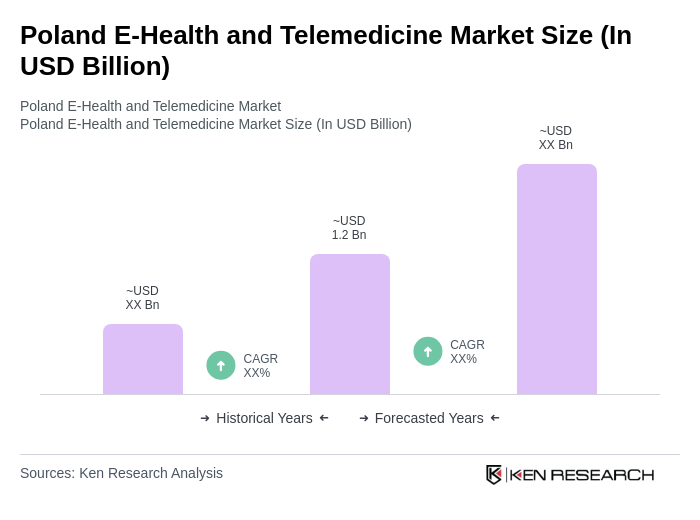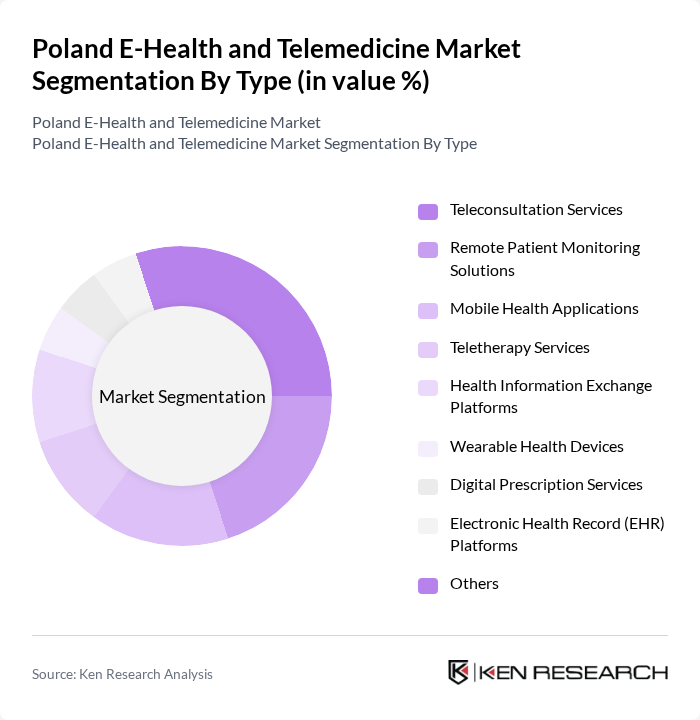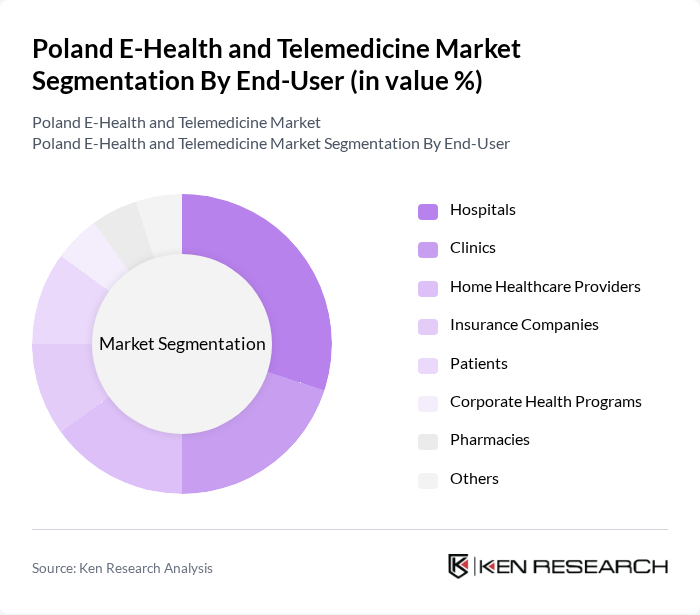Region:Europe
Author(s):Shubham
Product Code:KRAA3628
Pages:95
Published On:September 2025

By Type:The market can be segmented into various types, including Teleconsultation Services, Remote Patient Monitoring Solutions, Mobile Health Applications, Teletherapy Services, Health Information Exchange Platforms, Wearable Health Devices, Digital Prescription Services, Electronic Health Record (EHR) Platforms, and Others. Each of these segments plays a crucial role in enhancing healthcare delivery and patient engagement.

By End-User:The end-user segmentation includes Hospitals, Clinics, Home Healthcare Providers, Insurance Companies, Patients, Corporate Health Programs, Pharmacies, and Others. Each segment reflects the diverse applications of e-health and telemedicine solutions across different healthcare settings.

The Poland E-Health and Telemedicine Market is characterized by a dynamic mix of regional and international players. Leading participants such as Telemedico, DocPlanner, Medicover, Lux Med, Zdalna Medycyna, MedApp, Infermedica, HomeDoctor, Centrum Medyczne Damiana, Polmed, Telemedycyna Polska, eZdrowie, Nestmedic, Medonet, HealthUp, MyDoctor, Telehealth Polska, Medico, eHealth Polska, Telecare contribute to innovation, geographic expansion, and service delivery in this space.
The future of the e-health and telemedicine market in Poland appears promising, driven by technological advancements and increasing consumer acceptance. As the healthcare landscape evolves, the integration of artificial intelligence and machine learning is expected to enhance diagnostic accuracy and patient engagement. Furthermore, the ongoing government support for digital health initiatives will likely facilitate broader access to telehealth services, ultimately improving healthcare outcomes across diverse demographics in Poland.
| Segment | Sub-Segments |
|---|---|
| By Type | Teleconsultation Services Remote Patient Monitoring Solutions Mobile Health Applications Teletherapy Services Health Information Exchange Platforms Wearable Health Devices Digital Prescription Services Electronic Health Record (EHR) Platforms Others |
| By End-User | Hospitals Clinics Home Healthcare Providers Insurance Companies Patients Corporate Health Programs Pharmacies Others |
| By Application | Chronic Disease Management Mental Health Services Preventive Healthcare Emergency Care Rehabilitation Services Remote Diagnostics Others |
| By Distribution Channel | Direct Sales Online Platforms Partnerships with Healthcare Providers Mobile Applications Others |
| By Pricing Model | Subscription-Based Pay-Per-Use Freemium Models Bundled Services Others |
| By Technology | Cloud-Based Solutions On-Premise Solutions Mobile Technologies AI and Machine Learning Technologies Blockchain Solutions IoT and Connected Devices Others |
| By Policy Support | Government Subsidies Tax Incentives Grants for Digital Health Initiatives Others |
| Scope Item/Segment | Sample Size | Target Respondent Profiles |
|---|---|---|
| Telemedicine Service Users | 120 | Patients, Caregivers |
| Healthcare Providers Utilizing E-Health | 90 | Doctors, Nurse Practitioners |
| Health Insurance Representatives | 60 | Insurance Analysts, Policy Makers |
| Technology Providers in Telehealth | 50 | Product Managers, IT Specialists |
| Healthcare Administrators | 70 | Hospital Administrators, Clinic Managers |
The Poland E-Health and Telemedicine Market is valued at approximately USD 1.2 billion, reflecting significant growth driven by the adoption of digital health solutions and the increasing demand for remote healthcare services, especially post-COVID-19.